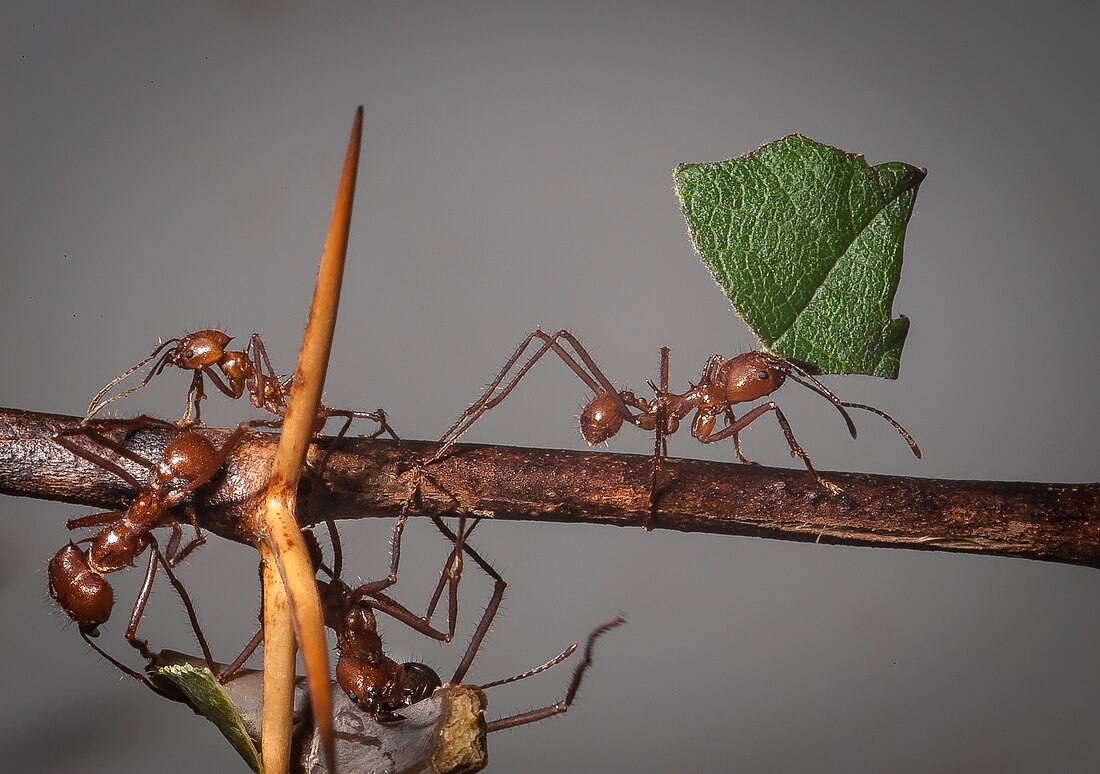Top Qs
Timeline
Chat
Perspective
Atta cephalotes
Species of ant From Wikipedia, the free encyclopedia
Remove ads
Atta cephalotes, commonly known as the hairy-headed leafcutter ant, is a species of leafcutter ant in the tribe Attini (fungus-growing ants). A single colony of ants can contain up to 5 million members, and each colony has one queen that can live more than 20 years. The colony comprises different castes, known as "task partitioning", and each caste has a different job to do. This caste includes Minims, Medias and Majors.
Remove ads
Taxonomy
The species is one of the earliest formally classified ants, first described by Swedish zoologist Carl Linnaeus in 1758. It was originally described as Formica cephalotes in his book the 10th edition of Systema Naturae, along with 16 other ant species, all placed within the genus Formica.[2] It was later transferred to a new genus, Atta, along with five other species by Danish zoologist Johan Christian Fabricius in 1804.[3] In 1911, American entomologist William Morton Wheeler designated A. cephalotes as the type species of Atta.[4] It was also designated as the type species of Oecodoma, but the genus is now a synonym of Atta.[5]
Remove ads
Biology and behaviour
The elder workers manages the colony's rubbish dump. These ants are excluded from the rest of the colony. If any wander outside the dump, the other ants will kill them or force them back. Rubbish workers are often contaminated with disease and toxins, and live only half as long as their peers.[6] Ants lay pheromone trails as a method of communication to guide other ants to a discovered food source when returning to the nest.[7][8] Minims work in the nest, digging, tending fungi and taking care of brood. Additionally they can ride the backs of the larger caste members for transport or, more importantly, defending ants encumbered by leaves from parasitic insects such as phorid flies which will lay eggs in the heads of leafcutter ants. The media act as harvesters. They bring leaves back to the nest for fungus cultivation. Lastly the majors almost exclusively perform defensive tasks guarding harvesting trails from other insects. [9]
Remove ads
Distribution and habitat
The species is widely distributed in the Neotropical region, from Mexico to Bolivia, with disjunct populations in Amazonas and north-eastern Brazil.[10]
Across the rainforest floor they typically occupy an area of approximately 200 square meters. They live in nests that can be as deep as 7 metres that they have carefully positioned so that a breeze can rid the nest of the dangerous levels of CO2 given off by the fungus they farm and eat.[11]
References
External links
Wikiwand - on
Seamless Wikipedia browsing. On steroids.
Remove ads

